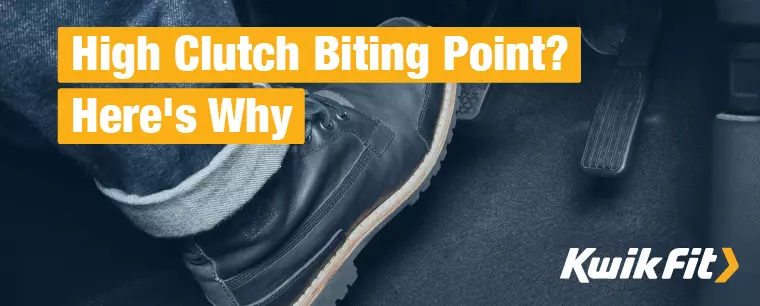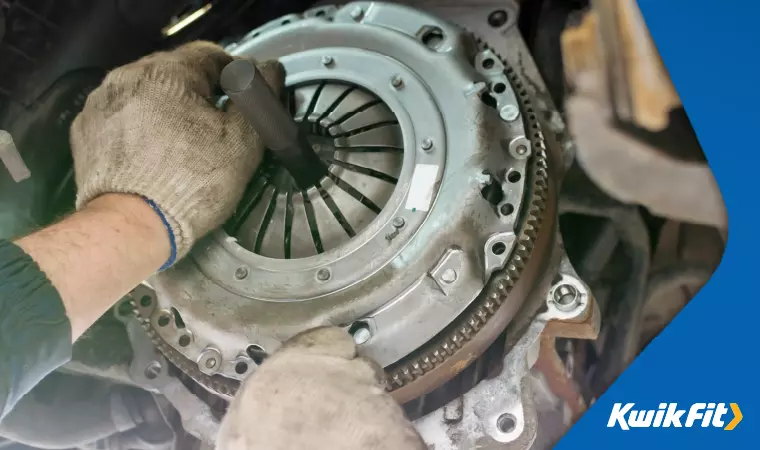High Clutch Biting Point? Here's Why
Jack Dreyer | Friday 10th February 2023 10:30am

If youíve had your car for a number of years now, have temporarily driven another personís car, or are considering buying a second-hand car, you may be wondering what a high clutch biting point signifies. In many cases, this can signify a costly repair Ė but you may get lucky and find it just needs an adjustment!
Read on to learn all about clutches!
Understanding clutch biting point
Itís first important to quickly run through how a clutch works and what itís there to do. You can read the full process of how an engine moves a car here, but the short version is that the clutch exists to engage and disengage the engine from the gearbox in order to facilitate changing gears while the engineís running.
There are lots of specific clutch designs, but the main concept is that there are two components that slot together with friction Ė when they slot together, the engine and gearbox are mechanically connected. Imagine this like a brake mechanism that clamps both sides together with friction pads.
Now, when you press the clutch pedal down, it puts tension on a mechanism and pulls the two halves apart Ė and this lets you change the gear on the gearbox before reconnecting the engine.
The ďbiting pointĒ, as youíre likely aware, is the point at which the clutch is engaged enough to be transmitting power, but not enough to fully go yet.
The biting point is a helpful ready-point
Because hovering at the biting point gives you control to accelerate quickly (after all, the clutch is already mostly-engaged), itís great when you need to use it to quickly pull away Ė such as at roundabouts.
But itís also helpful as an extra brake. For hill starts, itís usually a good idea to find the biting point with the handbrake still up so that you can gradually lower the handbrake as you accelerate. This stops your car rolling backwards in the moment between finding the biting point and having enough power supplied to go uphill.
But using the biting point wears the clutch

So this long preamble has been necessary to clearly understand why the biting point might be higher than it should be.
Much like a brake pad, the friction elements of a clutch assembly wear down over time. Their main role is to hold the clutch together but, in doing so, tiny parts are shaved off each time by virtue of having to counteract the force of an engine and a moving car. Over-relying on using the biting point for driving, then, puts a lot of undue strain on the clutch itself.
So a high bite point indicates one of two things:
a.) The clutch has worn heavily
The option you usually donít want to face is that the clutch has worn down to the point that it needs to physically travel further to make contact. While worrying, however, this isnít usually an emergency fix and isnít necessarily a bank-breaker for some vehicles. While a clutch replacement is usually considered a big, expensive fix for second-hand vehicles Ė it usually gives the vehicle a whole new lease of life!
b.) Adjustments need to be made
If youíre lucky, it could also just be that the clutch plates need adjusting or, in some vehicles, the cable that goes from the pedal to the clutch needs re-tightening. An improperly tensioned clutch or pedal can also be a reason for a vehicle not going into gear properly while the engineís on.
Free assessment at your local Kwik Fit
For a free assessment to figure out whatís wrong, get in touch with the experts at your local Kwik Fit centre!
Any facts, figures and prices shown in our blog articles are correct at time of publication.
Featured Articles
Is it Illegal to Drive With One Headlight?
Saturday 19th July 2025
Wondering if itís illegal to drive with one headlight? Learn about the safety risks and penalties of illegal blown bulbs and why you should fix them promptly.
Air Con in EVs & Hybrids: Experts Answer Your Questions
Monday 30th June 2025
Does air con drain EV batteries? Can you use the air con while charging an electric car? Find out the answers to these questions & more from Kwik Fitís experts.
Why Is Your Car Making a Noise? Fixes & Tips
Friday 13th June 2025
When your car starts making unexpected noises, it can certainly be quite disconcerting; it may be nothing to worry about, but hereís what you need to know.









